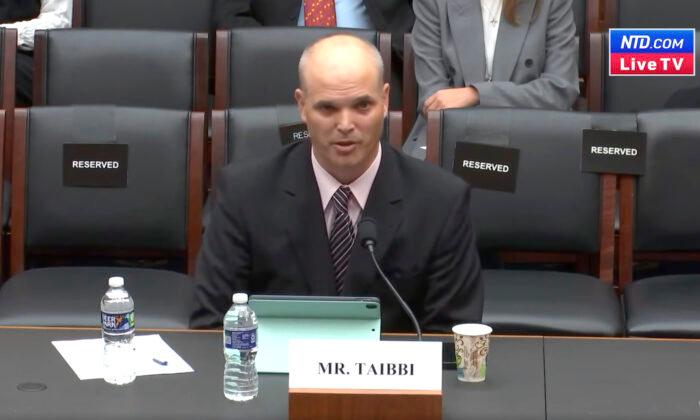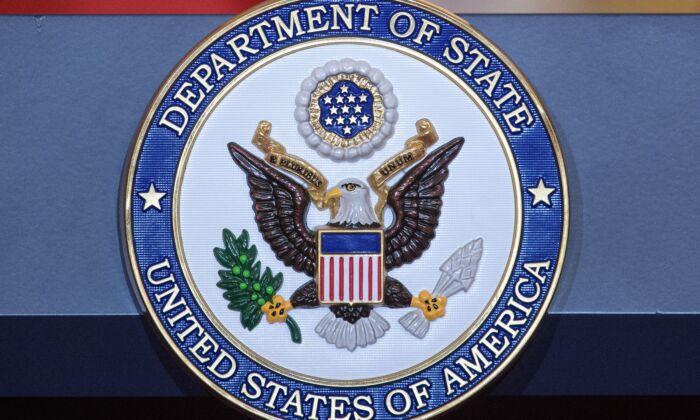Documents recently provided by a whistleblower reveal offensive tactics used by government and outside organizations to counter and preempt the spreading of undesirable information, said independent journalist Matt Taibbi.
Mr. Taibbi and journalists Michael Shellenberger and Alex Gutentag recently exposed a new set of documents from the Cyber Threat Intelligence League (CTIL), an “anti-disinformation” group that waged an aggressive information operation on the public.
The CTI files referred to these tactics with the military term “left of boom action” and justified their usage by the danger posed by somebody like former President Donald Trump, the journalist said.
Preemptive Tactics
CTIL was supposed to be a volunteer organization with a goal to identify misinformation related to the COVID-19 pandemic, Mr. Taibbi said, but “in reality, you got under the hood—they were interested in basically any topic.”CTIL described on its website its main goals, which included protecting the medical sector and life-saving organizations worldwide from cyberattacks and cyber threats—mainly related to the COVID-19 pandemic—and making them resilient to disinformation.
While the Twitter Files revealed that Twitter used defensive tactics to control the information posted on its platform, such as censorship and de-amplification, the CTI files show the organization resorted to offensive tactics like burner phones, creating sock puppet accounts, and infiltrating groups, Mr. Taibbi said.
The CTI files also revealed “a sort of a handbook manual on how to create false identities online,” he added.
Other tactics described in the CTI documents included putting financial pressure on disfavored groups through requests to cut off their banking services or even directly going to merchandising outlets to try to stop them from selling their wares, Mr. Taibbi explained.
From ‘Counterterrorism to Counter-Populism’
In a report on Substack, Mr. Taibbi wrote that the CTI files exposed that in 2019, “U.S. and UK military and intelligence contractors led by a former UK defense researcher, Sara-Jayne ‘SJ’ Terp, developed the sweeping censorship framework. These contractors co-led CTIL.”
In April 2020, CTIL partnered with the U.S. Cybersecurity and Infrastructure Security Agency (CISA) to stop malicious cyber activity related to COVID-19, the then-director of CISA announced on Twitter.
Mr. Taibbi said that the sudden emergence of “all of these anti-disinformation groups,” both in government and in civil society, did not occur by accident. He believes that their appearance coincides with the development of the internet and its huge democratizing force in the world that created “all sorts of political energy” that was uncontrollable and gave rise to the Occupy Wall Street movement, the Tea Party, and the Arab Spring.
In 2015 and 2016, a series of events took place that the national security establishment considered very troubling, such as Brexit, Donald Trump’s election, the Bernie Sanders presidential campaign, and the rise of Jeremy Corbyn to a Labour Party leadership position in the United Kingdom, Mr. Taibbi said.
Both Mr. Corbyn and Mr. Sanders were left-wing populist politicians who gained popularity among young voters.
To the national security establishment, all these events were “illegitimate threats of the same type ... that they had been dealing with overseas,” so it directed its efforts inward from counterterrorism to counter-populism, Mr. Taibbi explained.
The structures built to counter online activity overseas were effective to counter groups like Al-Qaeda, and ISIS, but once that massive structure is turned inward against the country’s own domestic population, it operates with no legal oversight and “it creates all kinds of questions that are kind of horrifying,” Mr. Taibbi said.
Media Competition Versus Shared Endeavor
The training materials included in the CTI files intended for people who are going to review domestic speech featured a quote from the joint chiefs of staff, “talking about how you have to use certain tactics to defeat your enemy,” Mr. Taibbi said. Thus, trainees learned to treat other Americans as the enemy, he added.This is the mindset of people inside the political establishment in the West, which can be viewed as “a sort of loose confederation of institutions” like media platforms, government, and civil society organizations, he pointed out.
The author of the book believes that “rivalry between media titles is a thing of the past. The future is collaboration, the hunt for evidence a shared endeavor, the truth out there if we wish to discover it,” Mr. Harding wrote.
However, Mr, Taibbi argued that America’s founders “envisioned the press to be an adversarial institution, by its nature.” The concept of the shared endeavor is completely opposite of the founders’ view, he explained.
Americans view “the clash of institutions and the clash of ideas as a good thing,” the journalist said.
“We all think differently, we live differently, we have different faiths, but ultimately, we arrived at a good place together. That system has worked incredibly well in America for hundreds of years.”
Replacing this concept with the other idea, like a shared endeavor, is “authoritarian in nature and ultimately anti-democratic. And it begins with speech,” Mr. Taibbi pointed out.
Malinformation
Another shift in the information policy is to evaluate information “according to where it rests on the narrative, as opposed to whether it’s true or false,” Mr. Taibbi said.It is a new concept that defines as disinformation anything that, for example, promotes COVID-19 vaccine hesitancy, he said.
“A true story about somebody dying of myocarditis after getting a shot” could be categorized as a form of disinformation, even if that person might be pro-vaccine, because it might cause other people not to get the vaccine, he explained.
“It’s what they would call malinformation,” he said.
CISA defines malinformation as information “based on fact, but used out of context to mislead, harm, or manipulate.”
Mr. Taibbi cited the Virality Project at Stanford University, which proposed addressing the issue of COVID-19 vaccine hesitancy through suppressing or disseminating information in order to shape public opinion.
The report proposed two approaches for social media platforms to boost preferred authoritative content: “first, raising up authoritative voices by elevating them in search results or on dedicated information carousels or tabs, and second, deplatforming those who repeatedly spread false and misleading information.”

For example, Pinterest “only surfaces content from leading public health institutions such as the CDC and WHO,” the report said.
Twitter deplatformed President Trump after the 2020 election along with 70,000 other accounts as “harmful sources,” according to the report.
Facebook removed Instagram accounts that belonged to Robert F. Kennedy Jr. and Del Bigtree’s “HighWire” talk show after they expressed their critical views on COVID-19 vaccines, the report stated. They had 799,000 and 162,000 followers, respectively, according to the report.
Mr. Bigtree is a filmmaker, investigative medical journalist, and the host of “The HighWire” talk show.
The job of a traditional journalist is to discern what is true and what is not, said Mr. Taibbi, adding that he was raised as a traditional journalist.
“Once it’s true, we put it out there, and then it’s up to you what to do with it.”
However, the new approach is to focus on “motive, intent, and likely impact, as opposed to the true/false dichotomy,” Mr. Taibbi said. The factuality issue has become secondary.
“That’s very dangerous,” he said.








